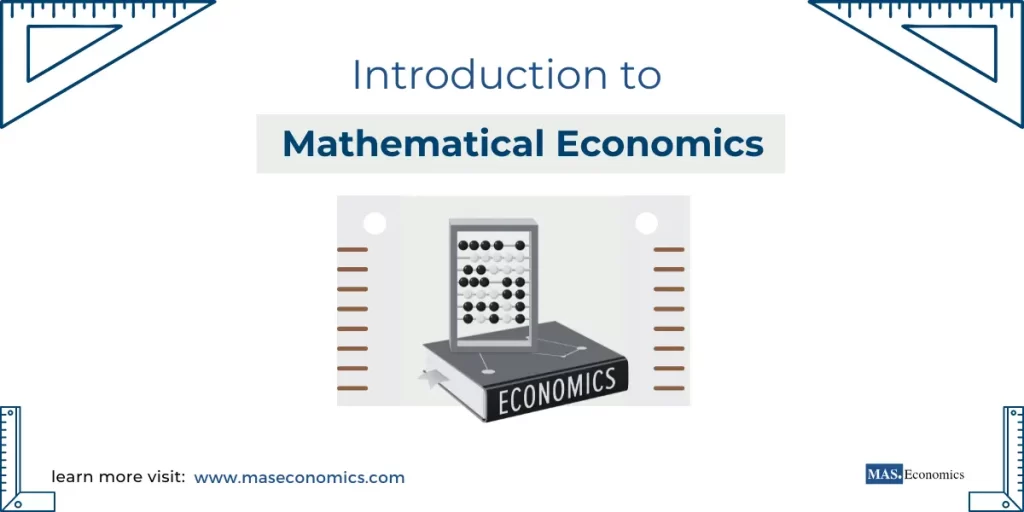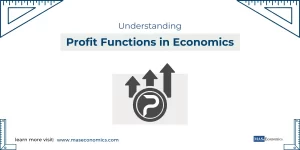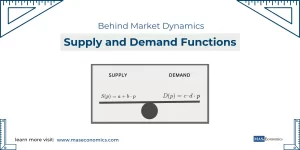Mathematics is at the core of modern economics, offering powerful tools to analyze, predict, and make informed decisions in complex economic systems. From understanding consumer behavior to predicting long-term growth trends, mathematical methods provide clarity and precision that cannot be matched by purely descriptive analysis. In this article, we explore the major mathematical techniques that form the backbone of economic analysis, delving into how they contribute to both theoretical understanding and practical application in the real economy.
The Crucial Role of Mathematics in Economics
Economics fundamentally revolves around making decisions in the face of scarcity—whether it’s allocating resources efficiently, determining prices, or making investments. Mathematics provides economists with the precision needed to express these relationships rigorously and to solve them effectively.
Mathematical economics transforms abstract economic concepts into measurable models that can be analyzed and tested. It allows for a deep exploration of how different variables—such as income, prices, output, and consumer preferences—interact with each other. The application of mathematics enables economists to make accurate predictions, conduct empirical tests, and derive meaningful conclusions that apply to policy-making and business decisions.
Mathematics in economics also serves as a universal language. Mathematical notations help condense complex relationships into simplified equations. This allows economists from all over the world to communicate ideas efficiently and unambiguously. For instance, the familiar supply and demand model, represented by linear equations, can quickly describe the dynamics of a market without the need for lengthy explanations.
Key Mathematical Concepts in Economics
Understanding Mathematical Symbols and Their Applications in Economics
Mathematics in economics often starts with understanding basic symbols and their meanings. Symbols like equality \(=\), inequality \(>\), \(<\), and summation \(\Sigma\) are essential in expressing economic relationships. These symbols allow economists to represent equilibrium, compare quantities, or aggregate different components.
For example, the concept of equilibrium in economics is defined by setting the demand function equal to the supply function. The equation \(Q_d = Q_s\) represents the point at which market demand matches market supply, resulting in stable prices. Without Mathematical Symbols, it would be cumbersome to express such relationships in words.
Growth and Decay
Exponential functions
Exponential functions are crucial for modeling growth processes, such as economic growth, population growth, or inflation. When we describe GDP growth over time or calculate the effect of compound interest, exponential functions become indispensable tools.
For instance, an exponential function like \(P(t) = P_0 e^{rt}\) can represent population growth over time, where \(P_0\) is the initial population, \(r\) is the growth rate, and \(t\) is time. This kind of modeling helps policymakers understand the effects of different growth rates and determine what actions need to be taken to manage growth sustainably.
Logarithmic functions
Logarithmic functions, on the other hand, are commonly used to measure elasticities. Elasticity describes how sensitive one variable is to changes in another, such as the price elasticity of demand. Using a logarithmic transformation makes it easier to handle percentage changes and simplify multiplicative relationships, thereby enabling clearer insights into how consumers and producers respond to changing market conditions.
Vectors and Matrices
In econometrics, vectors and matrices are fundamental for handling multiple variables simultaneously. Modern economic analysis frequently involves large datasets that contain observations across numerous variables—such as the income, education, and employment status of individuals in a labor study.
Matrices are used to simplify calculations when dealing with systems of equations. For example, in linear regression, the relationship between dependent and independent variables is often represented in matrix form. By organizing data in matrices, economists can perform calculations that would be cumbersome if tackled manually for each observation.
The elegance of matrix algebra allows us to succinctly estimate parameters in regression models, helping to predict economic behaviors, assess correlations, and evaluate causality—all of which are critical to empirical economics.
Set Theory
Set theory provides a foundational framework for defining feasible choices within given constraints. Economists use sets to illustrate budget constraints, production possibility frontiers, and investment options.
For example, consider a consumer deciding how to spend their limited income between different goods. The budget set includes all combinations of goods they can afford, given their budget and the prices of the goods. Set theory helps to represent and visualize this choice set, defining which options are feasible and which are not.
In production theory, the Production Possibility Frontier (PPF) represents all efficient combinations of goods an economy can produce given its resources and technology. Set theory is used to express the idea that, beyond the frontier, production is infeasible. It also captures the concept of opportunity cost, as producing more of one good requires sacrificing some quantity of another.
Logic and Decision Making in Economics
Economic agents—whether they are firms, consumers, or governments—frequently need to make decisions. Propositional logic allows economists to analyze these decisions systematically. By breaking decisions into propositions that are either true or false, economists can determine the optimal course of action.
In game theory, propositional logic is used to model strategic interactions between players, allowing the identification of Nash equilibria where no player can improve their payoff by unilaterally changing their strategy. Understanding logical structures is key to understanding how firms compete, cooperate, or act strategically in various market conditions.
Optimization
Economic decision-making often revolves around finding the best possible outcome given the available options—whether it’s maximizing utility, minimizing costs, or optimizing profit. Optimization techniques are therefore central to economics.
Differential Calculus and Marginal Analysis
Using differentiation, economists can determine the marginal cost, marginal revenue, or marginal utility of producing or consuming one more unit of a good. Marginal analysis is a cornerstone of economic thought, particularly in microeconomics, where firms aim to produce up to the point where marginal cost equals marginal revenue to maximize profit.
Lagrange Multipliers and Constrained Optimization
In many cases, economic agents face constraints. Firms may want to maximize output given a limited amount of capital and labor, or governments may seek to maximize social welfare subject to budget limitations. The Lagrange multiplier method allows economists to find the optimal solution in such constrained scenarios, showing how different constraints affect the maximum achievable objective.
Integral Calculus
Integral calculus is used to understand cumulative effects. For example, by integrating a demand curve, economists can determine the consumer surplus—a measure of the benefits consumers receive when they pay less for a product than they are willing to.
In macroeconomics, integration helps economists calculate total output, total income, or total cost over some time, making it invaluable for understanding overall economic performance and well-being.
Conclusion
Mathematics is not just a tool used by economists—it is the very language through which economic theory is developed, tested, and communicated. It enables us to move beyond qualitative statements about economic behavior and delve into precise, quantitative relationships that can be empirically verified.
From set theory, which helps define what is feasible, to calculus, which helps determine optimal solutions, mathematics forms the foundation of economic analysis.
FAQs
What is mathematical economics?
Mathematical economics uses mathematical tools to represent and analyze economic theories and behaviors, allowing precise formulation and testing of economic models.
How does calculus apply to economics?
Calculus, especially differential calculus, is used for marginal analysis, helping firms determine optimal production levels and consumers maximize utility by aligning marginal benefits with prices.
What is the role of optimization in economics?
Optimization techniques, such as constrained optimization using Lagrange multipliers, help firms, consumers, and governments make decisions to maximize output, utility, or welfare under specific constraints.
Why are matrices and vectors important in econometrics?
Matrices and vectors simplify handling large datasets and systems of equations, making it easier to perform linear regressions, estimate economic models, and analyze relationships between multiple variables.
How are exponential and logarithmic functions used in economics?
Exponential functions models growth processes like GDP and population, while logarithmic functions help measure elasticities, showing the responsiveness of demand or supply to changes in prices or income.
What is the significance of set theory in economics?
Set theory defines feasible choices, such as budget sets or production frontiers, and helps analyze trade-offs, such as opportunity costs when resources are allocated between competing options.
How does logic contribute to economic decision-making?
Propositional logic structures decisions and strategies, particularly in game theory, helping identify optimal strategies and Nash equilibria in competitive and cooperative scenarios.
How does integral calculus support economic analysis?
Integral calculus helps calculate cumulative measures like consumer surplus and total costs, providing insights into welfare economics and aggregate output over time.
Thanks for reading! Share this with friends and spread the knowledge if you found it helpful.
Happy learning with MASEconomics




